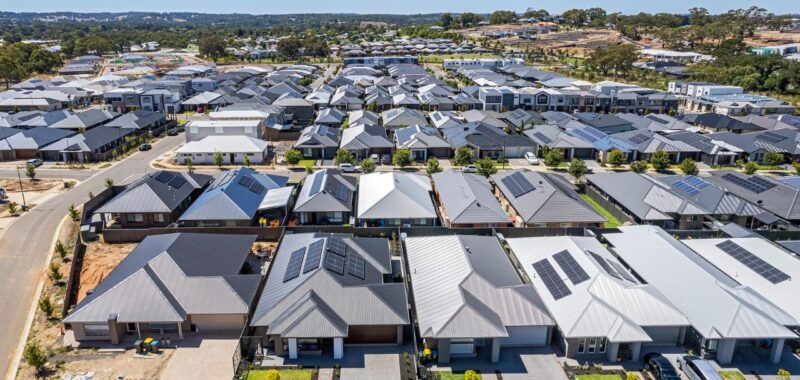According to new data from Cotality, the strongest housing market conditions are now concentrated in the fringes of each capital city, with lower-priced properties experiencing the highest growth rates over the past year.
In Sydney, all of the top twenty suburbs for annual growth were located at least 20km from the CBD, with areas in Fairfield, Liverpool and Blacktown leading the market.
The data shows 81 per cent of suburbs 20km or more from Sydney’s GPO recorded annual gains, compared with only 26 per cent of those within 5km.

Melbourne displayed similar patterns despite broader market softness.
While only 4 per cent of suburbs within 5km of the CBD saw value increases, 38 per cent of suburbs 20km or more from the city centre recorded growth, with Hume, Frankston and Casey emerging as standout performers.

Brisbane’s property market showed even more widespread growth, with 98 per cent of suburbs across the metro region recording value increases over the past 12 months. The lower quartile of the market rose by 14.0 per cent compared to just 4.8 per cent in the upper quartile.
Cotality’s Research Director, Tim Lawless, said households are making pragmatic decisions in response to current economic conditions.
“Households are making pragmatic decisions in response to tighter borrowing capacity and higher mortgage costs,” Mr Lawless said.
“That’s pushed demand towards the lower quartile of the market, and it’s across the outer suburbs that this value-driven demand is translating into the strongest growth.”
In Brisbane, 17 of the top 20 suburbs recording the highest annual gains were located at least 20km from the Brisbane GPO, with more than half situated within the Ipswich LGA.
Adelaide has experienced broad growth with dwelling values rising by 9.8 per cent over the past twelve months and every suburb recording an increase.
The lower quartile of the market saw values jump 15.2 per cent compared with 7.3 per cent in the upper quartile, with 16 of the top 20 growth suburbs located at least 20km from the Adelaide GPO.
Perth followed the same trend with lower quartile home values recording double the growth of the upper quartile over the past 12 months – 15.4 per cent versus 7.7 per cent.
Fifteen of Perth’s top 20 highest-growth suburbs were located at least 15km from the Perth GPO.
Mr Lawless said that this shift in buyer behaviour reflects a fundamental change in housing affordability.
“In theory, a household on a median income, with a 20 per cent deposit, would need to dedicate just over half of their gross income to afford a median-priced home,” he said.
The data highlights that growth conditions are broad-based across mid-sized capitals but consistently skewed toward outer areas where homes remain comparatively affordable.
Mr Lawless said that this geographic shift toward fringe suburbs has broader implications for urban planning and infrastructure.
“The result is that we’re seeing outer suburban markets do much of the heavy lifting in terms of price growth,” Mr Lawless said.
“This geographic tilt towards the fringe has implications for infrastructure, transport and planning, as populations in these areas grow rapidly off the back of housing demand.”

